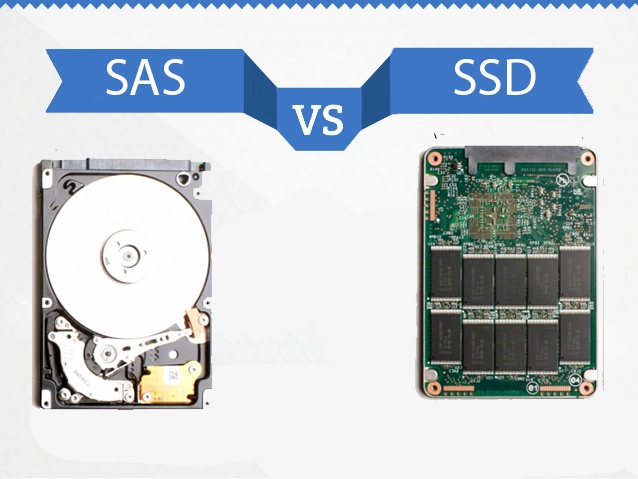Storage devices are the first and most crucial part of any system used to drive a business. Massive servers and remote storage all depend upon these physical storage devices. The data you use or prepare for your business is of no use if it cannot be reused in the future. Therefore, there are storage devices like SSD Server Drives and SAS drives in place.
These are some new technologies, and before these, we had HDDs and SATA drives, and many others. The major innovation in these storage devices was made in the area of improving reliability and speed. We have all used SATA and HDDs in the past and understand that these devices’ I/O speeds are too less to handle the daily operations in the current day.
Therefore, two major technologies came out as an alternative to these devices. Those were SAS and SSD drives. Both of them have their advantages and disadvantages, and their applications are also defined based on these limitations and advantages.
We will help you understand what are SAS drives and SSD drives and then discuss the advantages of SSD Server Drives.
What are SAS drives?
Serial Attached SCSI or SAS drives is a form of interface with two connectors residing in different domains. These connectors allow the data transfer from and to the hard disk drives. The main advantage of SAS drives is their fault tolerance. In case one of the connectors fail, the second one takes over, so you don’t have to suffer data loss.
In simple terms, it is a connector that connects a server motherboard with hard drives.
What are SSD drives?
Solid-state drives or SSDs were officially introduced in 1991. SSDs are built on the silicon memory chip that is the same technology used for making memory cards. The main advantage of SSD drives is they do not have any mechanical parts. It reduces the wear and tear and response time. They also ensure data integrity and include an error correction function to ensure reliability.
Benefits of SSD Drives
SSD drives have their benefits, and many businesses are taking advantage of them. Data storage and transfer are essential aspects of storage devices, and having a technology that can quickly fulfill your requirements is a must. Therefore, you should look at the various benefits of SSD drives that flaunt and tackles the requirements well as mentioned below:
Performance is King
First came SATA, and slowly the storage drive technology went ahead till SAS and SSD server drives. SAS drives come in two variants; one is 10K RPM, and another is 15K RPM. The numbers are enormous, and we know it, but still, they can’t beat the NAND (non-volatile flash memory) based SSD drives.
The reason is the absence of mechanical parts. We all know that mechanical parts will someday break down due to extended use. Since SSD has no mechanical parts, the time for it to be non-functional is also way greater than SAS. NAND I/O can achieve speeds up to 1 Gb/s, while 1.4 Gb/s for 3D NAND. All this directly improves your performance, and faster performance leads to faster boot time, movement, and higher bandwidth.
SSD Drives Reduce Energy Consumption
Energy consumption is one of the issues with disks having mechanical parts. One of the disadvantages of SAS drives is their higher energy consumption. They sometimes end up using more power than SATA drives. This is a bit of a problem. On the other hand, due to the absence of mechanical parts, the energy consumption in SSDs is also less, and therefore, the heating issue also reduces.
SSD Drives are More Durable
Durability is one of the issues that most generations have faced for a long time with respect to electronic devices. SAS drives have mechanical parts that can be damaged if your device falls or gets a shock. Since SSDs consist of silicon chips and no mechanical parts, they can withstand and handle shock better. Plus, they keep the data safe.
Enhanced Read / Write speeds
Unlike other storage drives, your SSD server drives’ read and write speeds are not affected but are further enhanced. The reason is that HDDs and SAS drives have tracks and drive platter that spins for reading and writing data. In SSDs, there is no spinning, turning, and actuator arms doing jobs for writing and reading jobs, which improves the speed.
Now that you’re aware of the differences, you can then choose SSD Server Drives as per your requirements. SAS drives and SSD drives are the most preferred enterprise solutions for solving enormous storage issues. These options are at the top in most enterprise setups as they offer a wide range of benefits of their own. We hope you are now sure about SSD’s benefits and planning to move forward with them if they fit your requirements.
